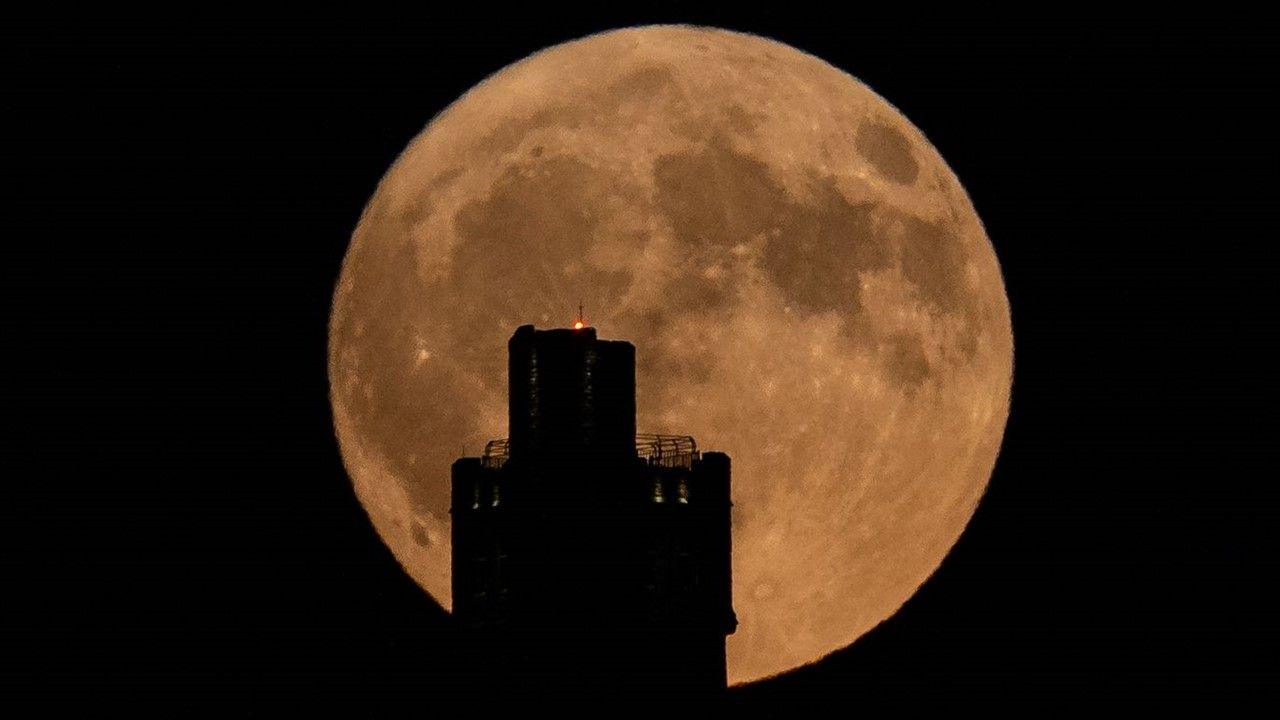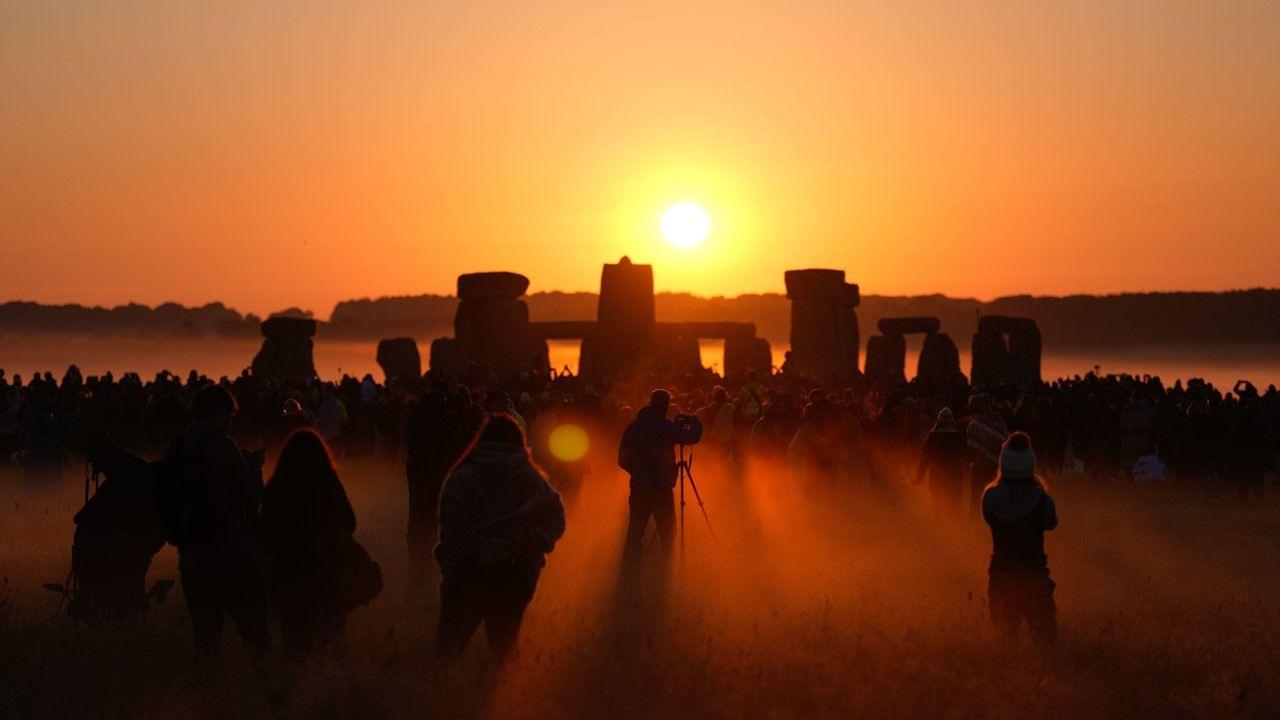
https://www.bbc.com/weather/articles/c0ln97pn34zo
June's full Moon comes next, rising in the east on 11 June.
Known as the Strawberry Moon, it was named by Native American and European cultures to signal the time of year that wild strawberries were harvested, according to the Old Farmer's Almanac, external.
Historically it was a way to keep track of time and monitor the changing seasons.
In the northern hemisphere, it will be the lowest full Moon until 2043 staying unusually close to the horizon.
Its position may mean it takes on an apt reddish tinge because of the way the thicker, lower layer of atmosphere diffracts the light.

The Strawberry Moon, rises behind Victoria Tower in Huddersfield, West Yorkshire, in 2023
Ten days later on 21 June, it is the summer solstice, the day of the year in the northern hemisphere with most daylight.
How much you get will vary depending on where you are in the UK and the higher your latitude the more you will have.
At this point, the northern hemisphere is most tilted towards the Sun. In the southern hemisphere, however, the Earth will be tilted away from the Sun and experiencing a winter solstice or shortest period of daylight of the year.

People watch the sunrise in 2024 heralding the summer solstice at Stonehenge
The summer solstice marks the start of astronomical summer - a time some people associate with the beginning of the season, although meteorologists mark it from the beginning of June.
The word solstice comes from the fact the Sun appears to stand still - from the Latin words sol (Sun) and sistere (to stand still).
The date of the solstice shifts between 20 to 22 June because the calendar year doesn't match with the time it takes Earth to orbit the Sun.
It actually takes the Earth 365 full days and one quarter to orbit the Sun, which is why we have a leap year every four years to bring our calendar and Earth's movements back into alignment.